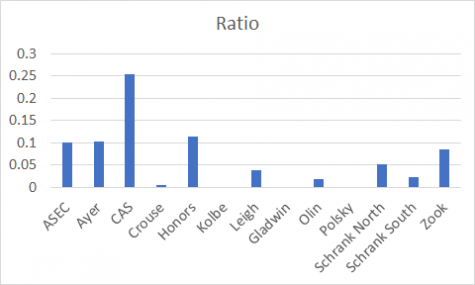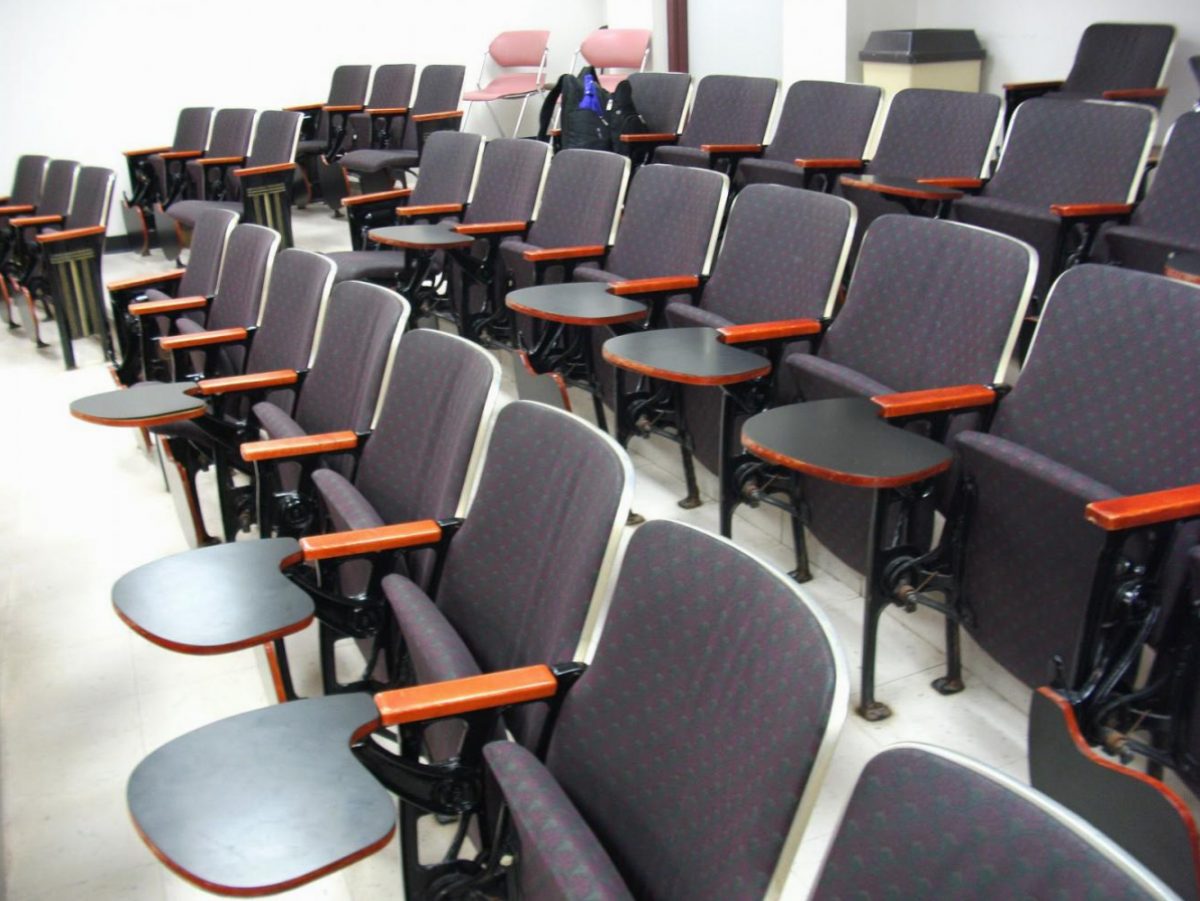UA Should Have More Left-Handed Desks to Become More of an Equal Opportunity Campus
A group of right-handed desks in a Kolbe lecture hall.
October 2, 2017
An appropriate desk is arguably the most important item required in a classroom in order to facilitate learning. However, this basic need may not be met at The University of Akron.
In a recent statistics class project, more than 200 students were sampled and approximately 16 percent were found to be left-handed. We, Adam Long and Amelia Dyck, counted nearly 3,000 desks in 13 different buildings on campus and only 5.5 percent of these were left-handed. In some buildings, such as in Kolbe, not a single left-handed desk was found among the hundreds of right-handed ones surveyed. This is not representative of the estimated 4,000 left-handed students at the University.

In addition, we observed that older buildings have fewer left-handed desks than newer buildings. Putting this into a graph, we found that the year a given classroom building was built correlates with its left-handed friendliness.

Many desks may feel like they are about the size of postage stamps, particularly in auditoriums, and may hardly be big enough for a notebook. When a desk is only set for a right hand, southpaws must crane their arms and unnecessarily stress muscles just to take notes.
Susanah Kowalewski, a left-handed electrical engineering student in her third year said she has to reach across and twist uncomfortably in right-handed desks in order to reach her paper. She said that she prefers sitting in left-handed desks but because they aren’t many, she’s had to get used to sitting in right-handed desks.
The rare left-handed desks that we counted in the statistics project were often relegated to the back corner of a classroom, which can further impact the education of left-handers, as they are forced to sit far from the professor if they can find a suitable desk.
The solution for this problem is simple. More left-handed desks could be added to classrooms, equaling the 16 percent ratio and fitting the needs of students. Better yet, desks could be replaced with tables, which are neutral to students of either dominant hand.
Either way, the fundamental needs of left-handed students should be addressed in order for the University to become an equal opportunity institution, as it proudly proclaimed on its website.
*Please note: This piece was written as an open letter to President Wilson












